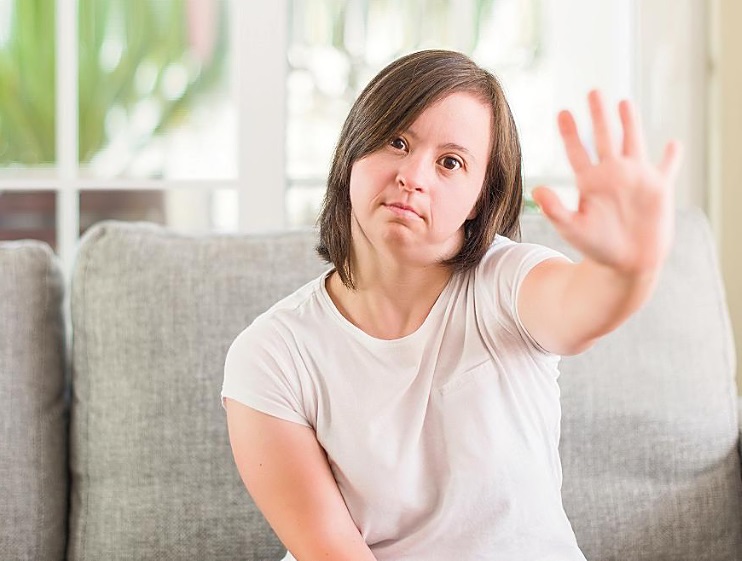Child abuse isn't something that only happens to little children: 32 percent of 14 to17 year-olds in the United States are abused or neglected in their lifetimes, and 28 percent are sexually victimized. 8
In 2015, the rate of violent victimization (including rape, robbery and aggravated assault) against persons with disabilities (12 years or older, except for persons 65 years or older) was more than 3 times higher than the rate for persons without disiabities. For each race and ethnic group reported by the U.S. Department of Justice, persons with disabilities had higher violent victimization rates than persons without disabilities.
- Persons with cognitive disabilities had the highest victim rates of violent crime. Children with autism had a lower risk.
- Children with Down syndrome or cerebral palsy had the same risk as children without disability.
- Persons with hearing disabilities had the lowest rates of violent victimization.
- Compared to individuals with a single disability, a greater proportion of persons with multiple disabilities were subjected to violent crime; particularly, rape and sexual assault.
- A higher percentage of violence against persons with disabilities was committed by persons the victims knew well or were casual acquaintances, compared to persons without disabilities. 9,10
WHAT ARE THE SIGNS OF CHILD ABUSE AND NEGLECT?
In younger children:
- Unexplained bruises, cuts, burns, or other injuries
- Poor personal hygiene and clothing that is ill-fitting, dirty, or inappropriate to the weather
- Reluctance or fear of going home, and excessive fear or anxiety about doing something wrong
- Extreme behaviors, such as being unusually passive or aggressive
- Acting either inappropriately as an adult (taking care of other children) or inappropriately infantile (rocking, thumb-sucking, tantrums)
- Displaying more knowledge or interest in sexual acts than is normal, including
acting out sexually explicit behavior
- Often late or absent from school In older youth:
- Changes in eating or sleeping habits
- Aggressive or inappropriate behavior
- Depression, anxiety, or mood swings
- Attention-seeking behavior
- Increased risk-taking
- Difficulty concentrating
- Declining school performance or absences
- Withdrawal from friends
- Physical distress (e.g., recurring headaches or stomachaches)
- Running away
- Sexual promiscuity 8
AN INTERNATIONAL "EPIDEMIC"
Abuse of children (and adults) with disabilities is not just a U.S. heartbreaking dilemma. The United Nation Secretary General's Report on Violence Against Children with Disabilities details the international reality that, "violence against children with disabilities occurs at annual rates at least 1.7 times greater than their non-disabled peers… 90% of individuals with intellectual impairments will experience sexual abuse at some point in their life." 11

STOP THE VIOLENCE: In 2015, the rate of violent victimization against persons with disabilities was more than 3 times higher than the rate for persons without disiabities. More boys with disabilities are physically abused and neglected, but more girls with disabilities are sexually abused.
ENOUGH ABOUT NUMBERS AND PROPORTIONS! WHY ABUSE?
Abuse among children with disabilities are the same rates as those found in the general population of single parents, teen parents and others with various levels of stress. However, families with children with disabilities can experience additional stressors, including:
- Feeling unprepared to handle the care of a disabled child, including acceptance of that child as being "different."
- Having financial or time limits stretched as additional medical/educational activities are suggested.
- Lacking necessary social supports or networks to work through the many concerns and situations that arise in providing care for this child and the rest of the family.7
UN Report: "Throughout history many – although not all – societies have dealt poorly with disability. Cultural, religious and popular social beliefs often assume that a child is born with a disability or becomes disabled after birth as the result of a curse, 'bad blood', an incestuous relationship, a sin committed in a previous incarnation or a sin committed by that child's parents or other family members.